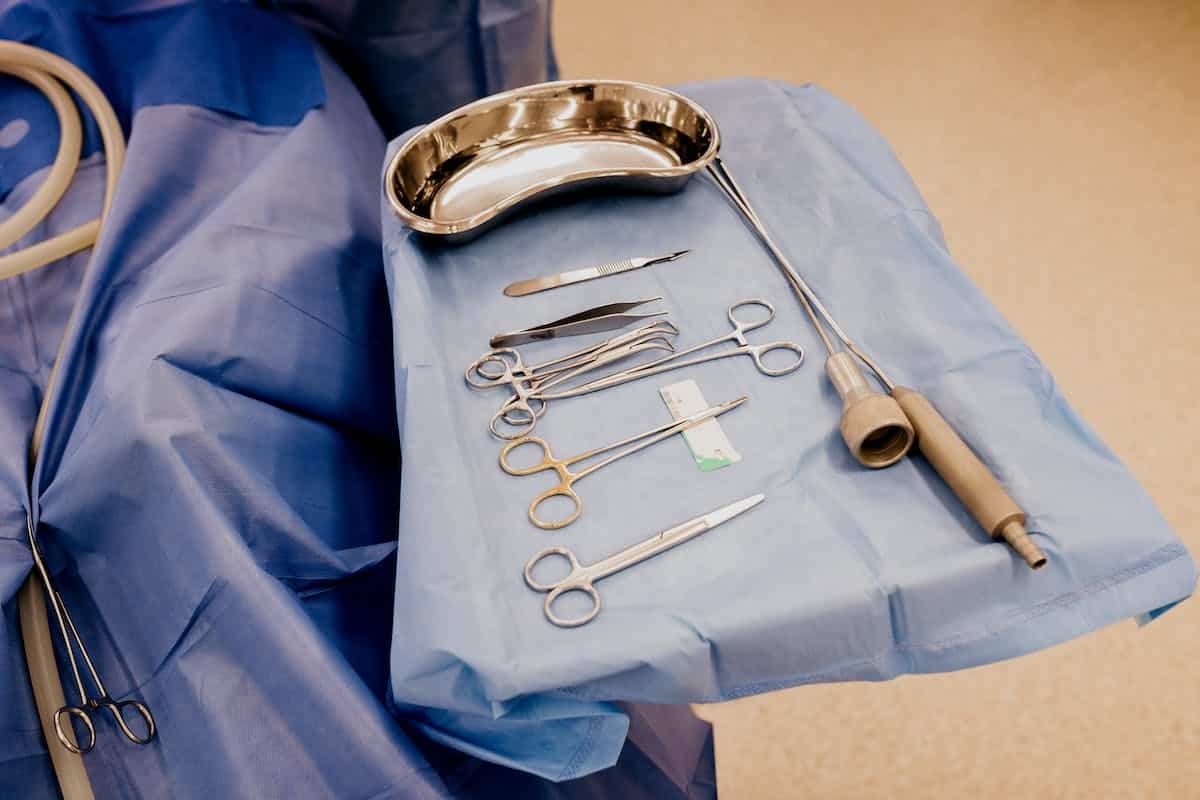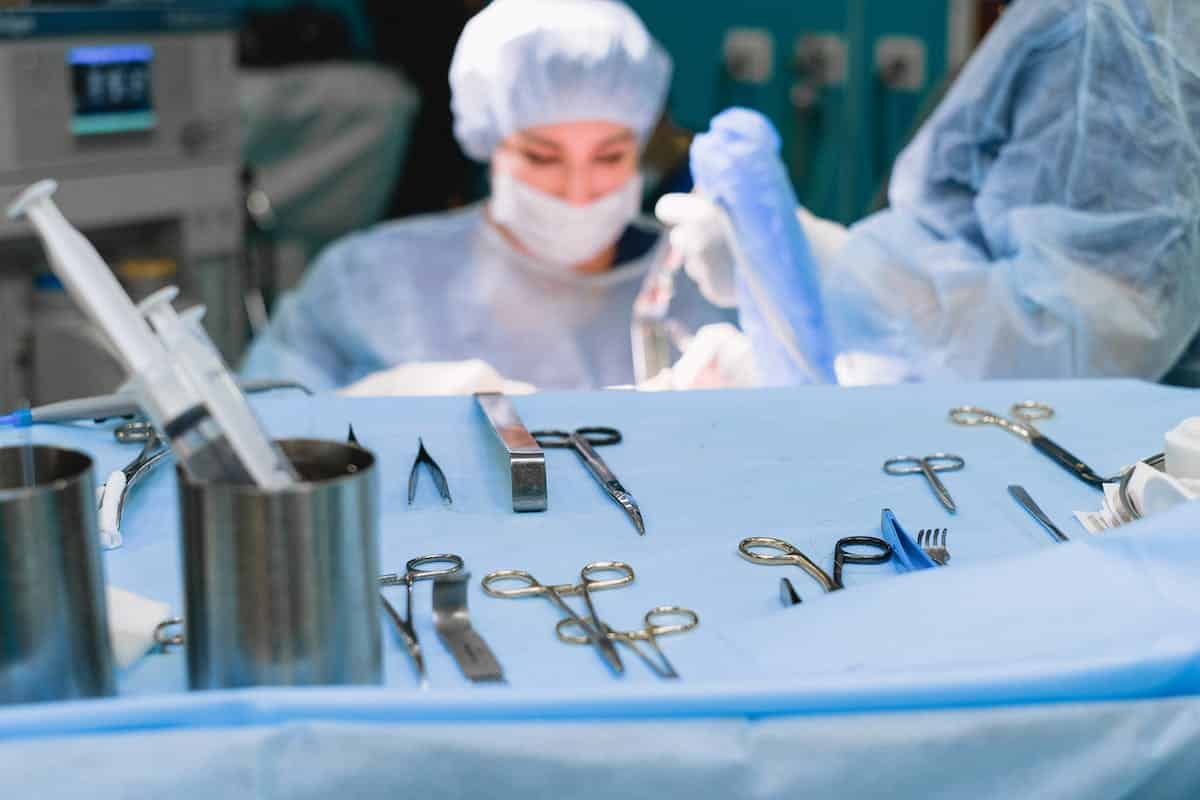In the ever-evolving landscape of spine surgery, there has been a progressive shift towards minimally invasive procedures, which are distinguished by their reduced impact on the patient in terms of recovery time and post-operative discomfort. This transformation is being driven by numerous technological advancements and innovations, from cutting-edge surgical instruments and imaging techniques to breakthroughs in spinal biologics, robotic surgery, and post-operative pain management. However, as we stand on the brink of what may be a significant revolution in the field, there are still many questions to be addressed and potential challenges to be navigated. This leaves us with a compelling need to explore these developments in greater depth, to appreciate their full potential and to anticipate the future trajectory of minimally invasive spine procedures.
Understanding Minimally Invasive Spine Procedures
To truly comprehend the complexities of minimally invasive spine procedures, one must delve into the intricate techniques these procedures employ, their purposes, and the benefits they offer to patients. These procedures are often recommended as alternatives to traditional open surgery, which typically involves a larger incision and longer recovery period.
Minimally invasive spine procedures utilise advanced imaging techniques and special instruments, which allow surgeons to perform operations through small incisions with minimal disruption to surrounding tissues. This results in less post-operative pain, faster recovery times, and a reduced risk of complications.
In terms of spine procedure costs, these are often lower for minimally invasive techniques than traditional surgeries due to shorter hospital stays and fewer complications. However, the exact cost can vary widely depending on the specific procedure, the surgeon’s experience, geographical location, and the patient’s overall health status.
Insurance coverage for these procedures varies as well. It is crucial for patients to have a detailed discussion with their insurance provider to understand what is covered and what is not. This will help avoid unexpected out-of-pocket expenses and ensure that the patient can fully benefit from this innovative approach to spine surgery.
Advancements in Spinal Surgical Tools
Significant advancements in spinal surgical tools have transformed the way minimally invasive spine procedures are performed. The advent of robotic-assisted spinal surgeries has allowed for enhanced precision and reduced risk of complications. Concurrently, the evolution of spinal imaging technology has enhanced the visualization of the surgical field, enabling surgeons to operate with increased accuracy and confidence.
Robotic Assisted Spinal Surgeries
In the realm of spinal surgeries, the advent of robotic-assisted procedures heralds a revolutionary shift, offering enhanced precision and reducing the invasiveness of traditional techniques. Robotic precision provides surgeons with a level of control that surpasses human capabilities, allowing for more accurate placements of screws and implants. This leads to fewer complications, less post-operative pain, and quicker recovery times, significantly improving patient comfort. Furthermore, these systems offer superior 3D imaging which allows for better pre-operative planning and real-time navigation during surgeries. The incorporation of AI into these robotic systems is an emerging trend that promises to boost the accuracy and efficiency of procedures even further. Thus, robotic-assisted spinal surgeries are set to redefine the landscape of minimally invasive procedures.
Enhanced Spinal Imaging Technology
Building on the advancements in robotic-assisted surgeries, the evolution of enhanced spinal imaging technologies has become a pivotal aspect in the refinement of minimally invasive spine procedures. These tools are now leveraging the power of artificial intelligence and telemedicine, with a clear shift towards increased precision and improved patient outcomes.
- Spinal telemedicine advancements: The application of telemedicine in spinal imaging allows remote diagnosis and consultation, enhancing access to expert care and reducing the need for physical hospital visits.
- Imaging AI integration: The fusion of AI with imaging technology has revolutionized spine procedures. Algorithms can identify pathology, assist in surgical planning, and predict patient outcomes with remarkable accuracy.
- Intraoperative imaging: Real-time imaging during surgery improves surgical accuracy, reduces the risk of complications, and shortens recovery times.
Innovation in Spinal Imaging Techniques
With advancements in technology, spinal imaging techniques have undergone remarkable innovation, paving the way for more accurate diagnosis and effective minimally invasive spine procedures. Integral to these advancements is the concept of spinal imaging training. This focuses on equipping medical professionals with the knowledge and skills required to utilize these new technologies effectively. The training ensures that the images obtained are of the highest possible quality, allowing for the accurate diagnosis and subsequent treatment planning.
Complementing this is the rapid pace of imaging software improvements. These improvements are constantly enhancing the quality, resolution, and accuracy of spinal imaging. They have facilitated the move from two-dimensional imaging to three-dimensional reconstructions, providing surgeons with a more comprehensive view of the spinal anatomy.
Moreover, advances in software have enabled the integration of imaging with surgical navigation systems. This fusion of technology allows for real-time imaging during procedures, significantly increasing the precision of minimally invasive spine surgeries.
Breakthroughs in Spine Biologics
Just as advancements in spinal imaging have revolutionized minimally invasive procedures, so too have breakthroughs in spine biologics transformed the landscape of spinal treatments. These advancements have been possible due to innovative biologic manufacturing techniques and ongoing research efforts.
To understand the gravity of this transformation, consider these three breakthroughs: – Development of bone morphogenetic proteins (BMPs): These synthetic proteins encourage bone growth and facilitate spinal fusion, reducing the need for bone grafts. – Introduction of demineralized bone matrix (DBM): Derived from allograft bone, DBM offers a scaffold for new bone growth, proving vital in spinal fusion procedures. – Progress in stem cell research: The potential to harness the body’s natural healing mechanisms for spine repair and regeneration represents a significant leap forward.
However, the path to these advancements has not been without its regulatory challenges. Each new biologic product must meet stringent safety and efficacy standards, involving rigorous testing and clinical trials. Despite these hurdles, the evolution of spine biologics is a testament to the relentless pursuit of better patient outcomes in spinal treatment. The future of minimally invasive spine procedures looks promising with these biologic innovations.
Modern Robotic Spine Surgery
Navigating the intricate landscape of spine surgery, modern robotics have emerged as a transformative force, delivering unprecedented precision and consistency in minimally invasive procedures. This robotic precision is underpinned by cutting-edge algorithms and high-resolution imaging systems, enabling surgeons to execute complex surgical maneuvers with remarkable accuracy.
Robotic-guided spine surgery not only minimizes tissue trauma but also enhances the surgeon’s ability to navigate challenging anatomical pathways. This results in less post-operative discomfort and a quicker recovery time – significant improvements in patient experiences.
Moreover, robotics allows for preoperative planning. Surgeons can now virtually simulate the operation, identifying potential challenges before the procedure begins. This proactivity reduces intraoperative surprises, thereby reducing the risk for complications.
However, the transition to robotic spine surgery is not without its challenges. The significant financial investment, steep learning curve, and the need for rigorous training programs are barriers to widespread adoption.
Nevertheless, the potential benefits of improved accuracy, safety, and patient experiences make a compelling case for the integration of robotics into spine surgery. As research continues and technology advances, the future of minimally invasive spine procedures promises to be even more precise, safe, and patient-friendly.

Latest in Spinal Disc Replacement
The domain of spinal disc replacement has witnessed significant advancements in recent years, with new techniques offering promising results for patients. These modern procedures carry an array of benefits, including reduced recovery time and improved postoperative mobility, making them a preferred choice in many cases. However, like any surgical intervention, these procedures bring certain inherent risks which warrant careful consideration and thorough patient education.
Advanced Disc Replacement Techniques
In the realm of spinal disc replacement, newfound advances have paved the way for innovative, minimally invasive techniques, providing patients with more effective and less disruptive treatment options. These advances are largely characterized by disc durability improvements and spinal alignment optimization.
- Disc Durability Improvements: Modern disc replacements are designed for longevity. Crafted from high-quality biocompatible materials, these replacements mimic the natural disc’s function and promote a more efficient recovery.
- Spinal Alignment Optimization: New surgical techniques ensure optimal spinal alignment, contributing to improved post-operative outcomes.
- Patient-Specific Approach: The latest advances incorporate personalized treatment plans, utilizing 3D imaging and predictive analytics to tailor the procedure to the individual’s anatomy and condition.
These advancements have significantly enhanced recovery times and overall patient satisfaction, marking a new era in spinal disc replacement.
Benefits of New Procedures
With the advent of advanced disc replacement techniques, patients now enjoy numerous benefits, including significantly reduced recovery times, diminished post-operative discomfort, and improved long-term spinal health. These latest innovations have transformed the spine health landscape, promoting overall better patient outcomes.
A substantial advantage of these new procedures is their affordability. The swift recovery time reduces hospital stay duration, subsequently lowering overall healthcare costs. Additionally, the minimal invasiveness of these procedures often means lower costs related to post-operative care and rehabilitation.
Insurance coverage has also expanded to include these advanced procedures, making them more accessible to a broader population. This expanded coverage plays a crucial role in facilitating early intervention, which is key in preventing further spinal deterioration and promoting optimal health outcomes.
Risks in Disc Replacement
Despite the numerous advantages of the latest disc replacement procedures, it’s imperative to also consider the potential risks associated with these minimally invasive spine interventions. These Disc Replacement Complications may include:
- Potential damage to surrounding nerves during the procedure, leading to numbness or weakness.
- Implant displacement or failure, which might necessitate additional surgeries.
- In rare instances, infection or bleeding within the spinal column could occur post-operation.
Each patient’s medical condition is unique; therefore, the risk factors can vary. It’s crucial to discuss these risks with a healthcare provider to make an informed decision. Alternative Treatment Options, such as physical therapy or non-surgical interventions, may be considered depending upon the individual’s health condition and the severity of the disc disease.
Advances in Spinal Fusion Techniques
How has the process of spinal fusion, a common method for treating debilitating back pain, evolved with recent technological advancements and improved surgical techniques? The answer lies in two key areas: fusion material innovation and spinal alignment precision.
Fusion Material Innovation has brought forth the use of biocompatible materials that facilitate bone growth, replacing traditional bone grafts. These materials, often bioengineered, are designed to mimic the environment of the human body, encouraging faster healing and reducing the risk of graft rejection or infection. They also have the added benefit of being available in various shapes and sizes, allowing for a more customized fit.
Alongside this, Spinal Alignment Precision has dramatically improved, thanks largely to advancements in imaging technology. Intraoperative navigation and 3D imaging allow surgeons to view the spine in real time, enabling more precise placement of screws and rods. This reduces the risk of nerve damage and increases the likelihood of successful fusion.
In addition, minimally invasive techniques have been refined, with smaller incisions and lesser tissue disruption, leading to faster recovery times. These advances have not only improved patient outcomes but also broadened the scope of spinal fusion, making it a more viable option for a larger number of patients.
Revolution in Pain Management Post-Surgery
The recent revolution in post-surgery pain management has been transformative in the context of minimally invasive spine procedures. Advanced analgesics have been developed that are more effective and have fewer side effects, changing the landscape of post-surgical care. Furthermore, innovative rehabilitation and recovery techniques have been introduced, which have significantly improved patient outcomes and quality of life.
Advanced Post-Surgery Analgesics
In the realm of post-operative care, advanced analgesics herald a significant revolution in pain management, particularly after minimally invasive spine procedures. Pain threshold studies have influenced the development of these potent pain relievers, providing a more comfortable recovery experience for patients.
Analgesic delivery methods have also seen notable advancements, including:
- Localized injections: These provide targeted relief, minimizing systemic side effects.
- Patient-controlled analgesia: This gives patients autonomy, allowing them to manage their pain levels effectively.
- Continuous slow-release patches: These maintain a steady level of analgesic, reducing the frequency of dosage administration.
Each method is designed to cater to individual pain thresholds and recovery progress. This multifaceted approach to post-operative analgesics is transforming patient care, making the recovery process more manageable and less painful.
Rehabilitation and Recovery Techniques
As we navigate the complex landscape of post-surgical pain management, rehabilitation and recovery techniques emerge as pivotal components, revolutionizing the patient experience through an innovative blend of therapy and technology. In particular, spinal bracing advancements have streamlined recovery by providing dynamic support and stabilizing the spine post-surgery. Modern braces are more comfortable, customizable, and effective at promoting healing, reducing pain, and preventing further injury. Concurrently, neurological monitoring improvements have proven crucial in detecting and mitigating potential complications. The enhanced precision and real-time feedback of these systems allow for swift adjustments in the rehabilitation process, reducing risks and optimizing recovery outcomes. These advancements underscore the ongoing evolution of minimally invasive spine procedures, underscoring the promising trajectory of the field.
Emerging Trends in Recovery and Rehabilitation
While minimally invasive spine procedures have dramatically reduced recovery times, new trends in rehabilitation are further improving patient outcomes post-operatively. These advancements, primarily concerning alternative rehabilitation methods and post-procedure nutrition, offer a more holistic approach to recovery, focusing not just on physical healing but also on overall wellbeing.
The following are some emerging trends in recovery and rehabilitation:
- Bespoke Physiotherapy: Tailored physiotherapy programs are being designed to address individual patient needs, focusing on strengthening the back muscles and improving flexibility.
- Nutrition-Based Recovery: Greater emphasis is being placed on post-procedure nutrition. Diets rich in protein and anti-inflammatory foods aid in faster tissue repair and reduce inflammation, respectively.
- Mind-Body Therapies: Complementary therapies such as yoga, acupuncture, and meditation are being integrated into recovery programs to help patients manage pain and stress post-procedure.
The incorporation of these trends into recovery plans is a testament to the evolving landscape of spinal surgery recovery. By addressing all aspects of patient health – physical, nutritional, and psychological – these innovations are pushing the boundaries of what is possible in post-operative care, offering patients a more comprehensive and effective path to recovery.
Case Studies: Success Stories of Recent Innovations
Delving into the realm of practical application, numerous case studies illuminate the success and efficacy of recent innovations in minimally invasive spine procedures. One such case report highlights the use of robot-assisted surgery in correcting lumbar spinal stenosis. The patient, a 58-year-old man, experienced significant reduction in back pain and improved mobility post-surgery, underlining positive patient experiences.
Another case study reveals the application of endoscopic spine surgery. The 45-year-old patient with disc herniation reported minimal post-operative pain and a swift return to daily activities. This case demonstrated not only better patient experiences but also indicated reduced surgical costs, as the patient’s hospital stay was notably shortened.
A third case portrays the success of a novel procedure – Percutaneous Pedicle Screw Fixation. The 52-year-old patient with spondylolisthesis experienced substantial pain relief and improved function. The procedure, requiring smaller incisions, reduced surgical costs by minimizing hospital stay and lessening the need for post-operative care.
These cases indicate that the latest minimally invasive spine procedures not only improve patient experiences but also curtail surgical costs. They herald a promising era of enhanced patient care, reduced expenditure, and improved outcomes in spinal surgery.
The Future of Minimally Invasive Spine Procedures
Building on the demonstrated success and cost-effectiveness of recent advances, the future of minimally invasive spine procedures promises significant potential for further innovation and improved patient outcomes. The advent of Telehealth consultations and comprehensive preoperative planning have already begun to shape the trajectory of these procedures, paving the way for a more patient-centered approach.
The following points highlight future possibilities:
- Smart Technology Integration: The integration of AI and machine learning into preoperative planning could significantly enhance the precision of these procedures. This could lead to fewer complications and quicker patient recovery times.
- Telehealth Consultations: Virtual consultations will likely become more prevalent, allowing patients to receive expert care remotely. This could widen access to these specialized procedures.
- Advancements in Surgical Tools: The development of more sophisticated, smaller, and precise surgical instruments will continue to drive the shift towards minimally invasive procedures.
These innovations, combined with a commitment to ongoing research and development, suggest a future where minimally invasive spine procedures become the standard. The focus will likely continue to shift towards optimization of patient outcomes, reducing hospital stays, and improving overall quality of life for patients.
Frequently Asked Questions
What Is the Average Cost of Minimally Invasive Spine Procedures?
The average cost of minimally invasive spine procedures varies widely, depending on complexity, location, and insurance coverage. Despite the cost, their effectiveness and success stories significantly contribute to their increasing popularity among health professionals and patients.
How Long Is the Typical Recovery Time After Undergoing a Minimally Invasive Spine Procedure?
The typical recovery time after a minimally invasive spine procedure varies, but it is generally shorter due to the procedure’s effectiveness. Patients usually experience improved post-procedure mobility within a few weeks to several months.
How Common Are Complications or Side Effects Following These Procedures?
Complications or side effects following minimally invasive spine procedures are relatively uncommon. Patient experiences vary, but the procedure effectiveness is typically high, leading to few post-operative issues when performed by skilled professionals.
Are There Any Lifestyle Changes or Precautions Needed Before Undergoing These Procedures?
Before undergoing minimally invasive spine procedures, certain lifestyle changes are often recommended. These may include diet adjustments to support healing and exercise modifications to strengthen the back and improve flexibility, thereby maximizing procedural success.
Is Insurance Likely to Cover These Innovative Minimally Invasive Spine Procedures?
Insurance criteria for coverage of spine procedures vary significantly. It’s dependent on the individual’s policy terms and the demonstrated medical necessity of the procedure. Always consult your insurance provider for specific coverage information.


